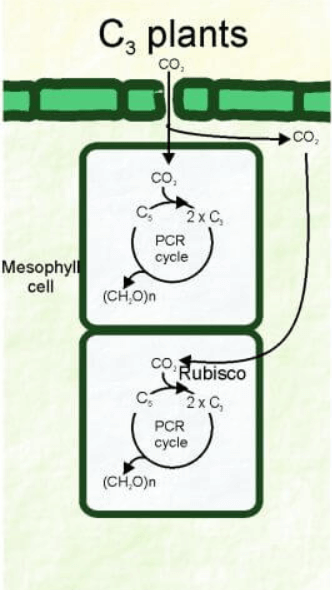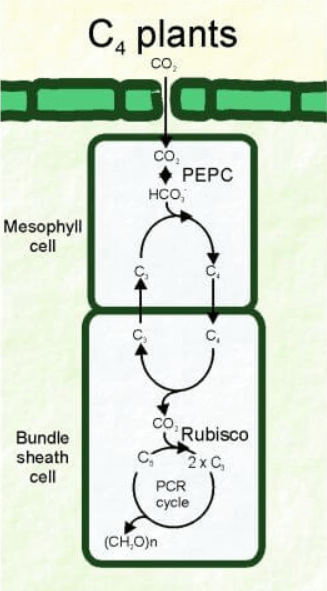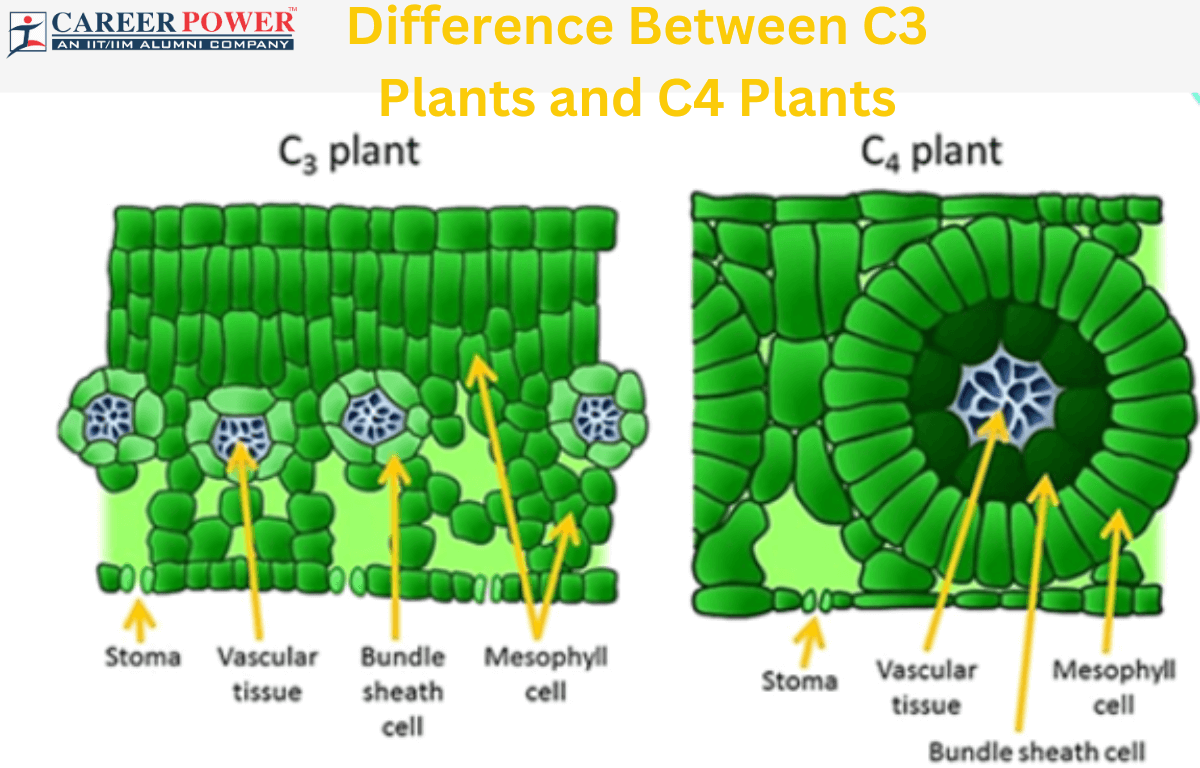Plants are mainly of two types C3 and C4 plants. These are two different photosynthetic pathways that plants use to fix carbon dioxide. Here we have discussed a brief overview of the difference between the two types of plants. C4 Plants are generally more efficient at photosynthesis in conditions with high light intensity, high temperatures, and limited water availability, which is why they are prevalent in arid and tropical regions. C3 plants, on the other hand, are more widespread and adaptable to a broader range of environmental conditions.
Define C3 and C4 Plants
C3 plants and C4 plants are two different types of photosynthetic pathways found in plants, which refer to the way they fix carbon dioxide (CO2) during photosynthesis. The distinction between C3 and C4 plants lies in their carbon fixation strategies, which impact their ability to thrive in different environmental conditions.
1. C3 Plants
- C3 plants are the most common type of plants and include many familiar species of wheat, rice, and most trees.
- They use the C3 photosynthetic pathway, where CO2 is initially fixed into a three-carbon compound during photosynthesis.
- C3 plants tend to be less efficient in hot and dry conditions because they can lose more water due to a process called photorespiration.
- Most common plants include many trees (e.g., oak, maple), vegetables (e.g., wheat, rice, soybeans), and many ornamental plants.

2. C4 Plants
- C4 plants are adapted to hot and arid environments and include plants like maize (corn), sugarcane, and certain types of grasses.
- They use the C4 photosynthetic pathway, where CO2 is initially fixed into a four-carbon compound before entering the regular Cavin cycle.
- C4 plants are more water-efficient and have an advantage in locations with high temperatures and limited water resources.
- Plants that are adapted to hot and dry environments, such as corn (maize), sugarcane, and many types of grasses (e.g., Bermuda grass).

Difference Between C3 and C4 Plants
We have mentioned some of the general differences, and there can be variations among specific plant species. C4 plants have adaptations that make them more efficient in hot and dry conditions, while C3 plants are more common and found in a wider range of environments.
| Different Between C3 and C4 Plants | ||
| Characteristics | C3 Plants | C4 Plants |
| Photosynthetic Location | The photosynthetic location in C3 plants is Mesophyll cells. | The photosynthetic location in C4 plants is mesophyll and bundle-sheath cells. |
| Initial Fixation of CO2 | The initial fixation of CO2 occurs during the Calvin cycle. | PEP carboxylase and Calvin cycle. |
| CO2 Concentration Mechanism | Passive diffusion of CO2. | Concentrates CO2 before the Calvin cycle. |
| Photorespiration | More susceptible due to lower CO2 affinity. | Less susceptible due to concentrated CO2. |
| Water Use Efficiency | Lower. | Higher. |
| Temperature Sensitivity | More sensitive to high temperatures. | Less sensitive to high temperatures. |
| Example Plants | Examples of C3 plants are wheat, rice, and soybeans. | Examples of C4 plants are corn, sugarcane, and many grasses. |
Functions of C3 and C4 Plants
C3 and C4 plants are two different types of photosynthetic pathways used by plants. They have distinct functions and adaptations. C3 plants are adapted for moderate conditions and are less water-efficient, while C4 plants are adapted for high-temperature and high-light environments, making them more water-efficient and suitable for hot climates. These differences in photosynthetic pathways allow plants to adapt to various ecological niches and environmental conditions.
Functions of C3 Plants
Here we have mentioned some of the functions of C3 plants.
- Photosynthesis: C3 plants, like wheat, rice, and most trees, use the C3 photosynthetic pathways. They fix carbon dioxide (CO2) into a three-carbon compound during photosynthesis.
- Efficiency: C3 plants are efficient at photosynthesis under moderate light and temperature conditions.
- Water Use: They tend to use more water due to a less efficient carbon fixation process, making them more susceptible to drought conditions.
- Location: C3 plants are typically found in temperate regions and are less common in hot and arid environments.
Functions of C4 Plants
Here we have mentioned some of the functions of C4 plants.
- Photosynthesis: C4 plants, such as corn, sugarcane, and many grasses, utilize the C4 photosynthetic pathway. They initially fix CO2 into a four-carbon compound before transferring it to the Calvin cycle.
- Efficiency: C4 plants are more efficient in photosynthesis under high light and high-temperature conditions. This adaptation allows them to thrive in hot climates.
- Water Use: They are more water-efficient because they reduce water loss through transpiration.
- Location: C4 plants are commonly found in typical and subtropical regions, as well as in areas with high light intensity and temperature.



 50 Vegetables Name for Kids in English a...
50 Vegetables Name for Kids in English a...
 Food Chain: Definition, Types, Examples,...
Food Chain: Definition, Types, Examples,...
 Human Respiratory System: Definition, Di...
Human Respiratory System: Definition, Di...













